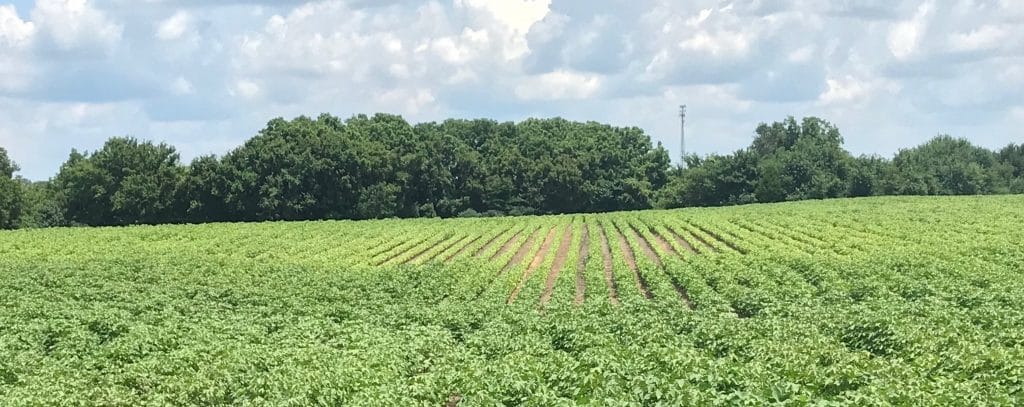 Over the past month, I’ve received several images of sulfur deficiencies in cotton. While we are quickly approaching a point in which a sulfur fertilizer application will be unable to impact yield in 2019, understanding what a sulfur deficiency looks like may help identify areas which will likely respond to the nutrient during the 2020 season. This blog covers the characteristics of a sulfur deficiency, presents atmospheric deposition data, and highlights current UT recommendations for the nutrient in cotton production. Continue reading
Over the past month, I’ve received several images of sulfur deficiencies in cotton. While we are quickly approaching a point in which a sulfur fertilizer application will be unable to impact yield in 2019, understanding what a sulfur deficiency looks like may help identify areas which will likely respond to the nutrient during the 2020 season. This blog covers the characteristics of a sulfur deficiency, presents atmospheric deposition data, and highlights current UT recommendations for the nutrient in cotton production. Continue reading
All posts by Tyson Raper, Cotton & Small Grains Specialist
Managing growth after Hurricane Barry
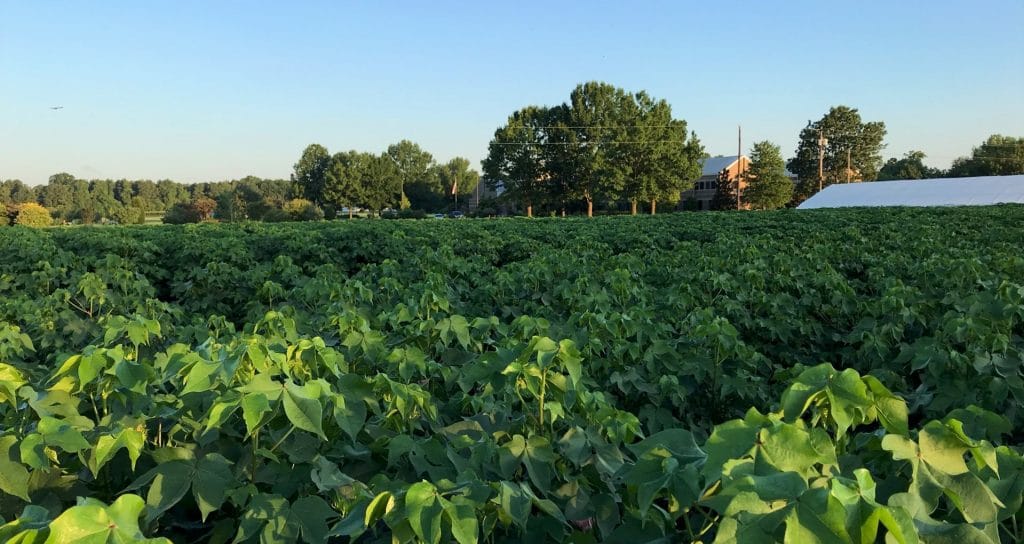
The calendar says late July, but the chill on the wind this morning made it seem like we had to be deep enough into the football schedule for a solid SEC football match-up on Saturday. This blog covers a few points concerning cotton growth under mid-season daytime and nighttime temperatures between 85 and 65 following excessive rainfall. Continue reading
Cotton response to saturated soils in West TN
Authors: Avat Shekoofa and Tyson Raper
Reports of ‘sudden wilt’, ‘parawilt’, or ‘wet wilt’ began Wednesday afternoon and continued through Thursday. This article briefly explains the phenomena and discusses management during recovery.
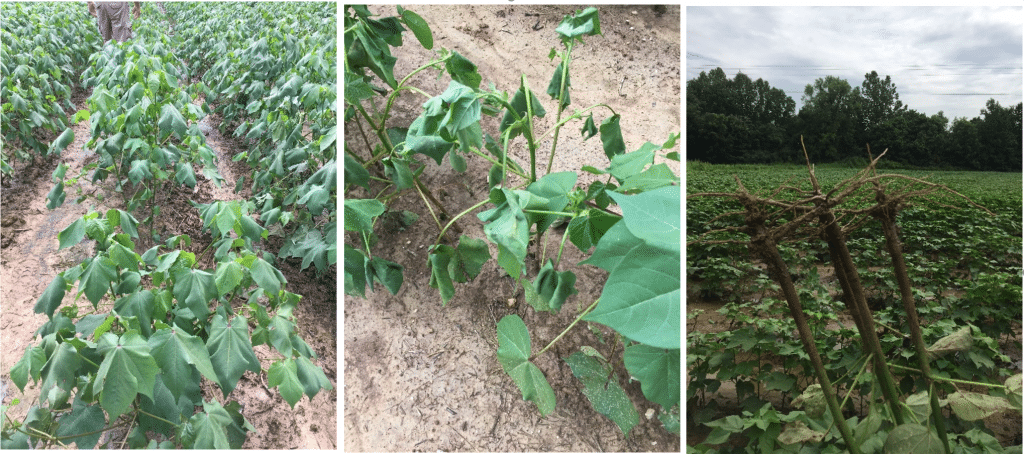
And away we go: Controlling cotton plant growth in 2019
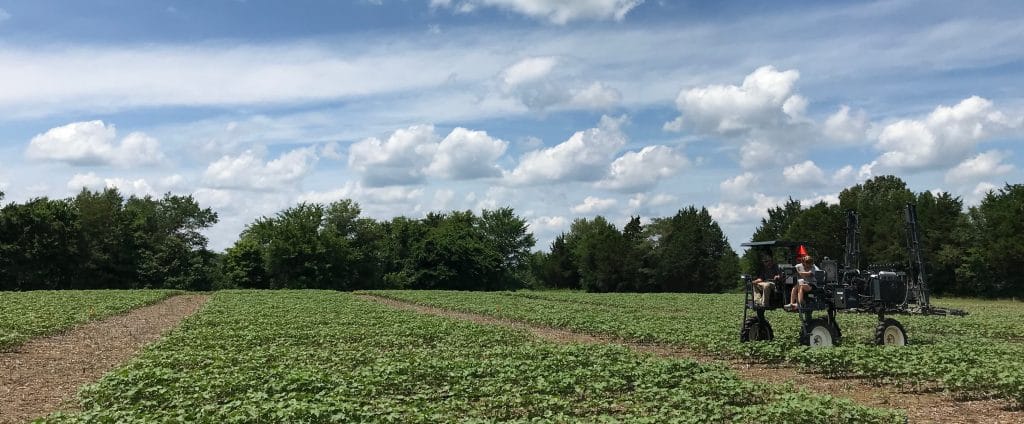 This blog article covers a few things to keep in mind while managing cotton growth during the 2019 season. Continue reading
This blog article covers a few things to keep in mind while managing cotton growth during the 2019 season. Continue reading
Thoughts on cotton with 7 days left in May
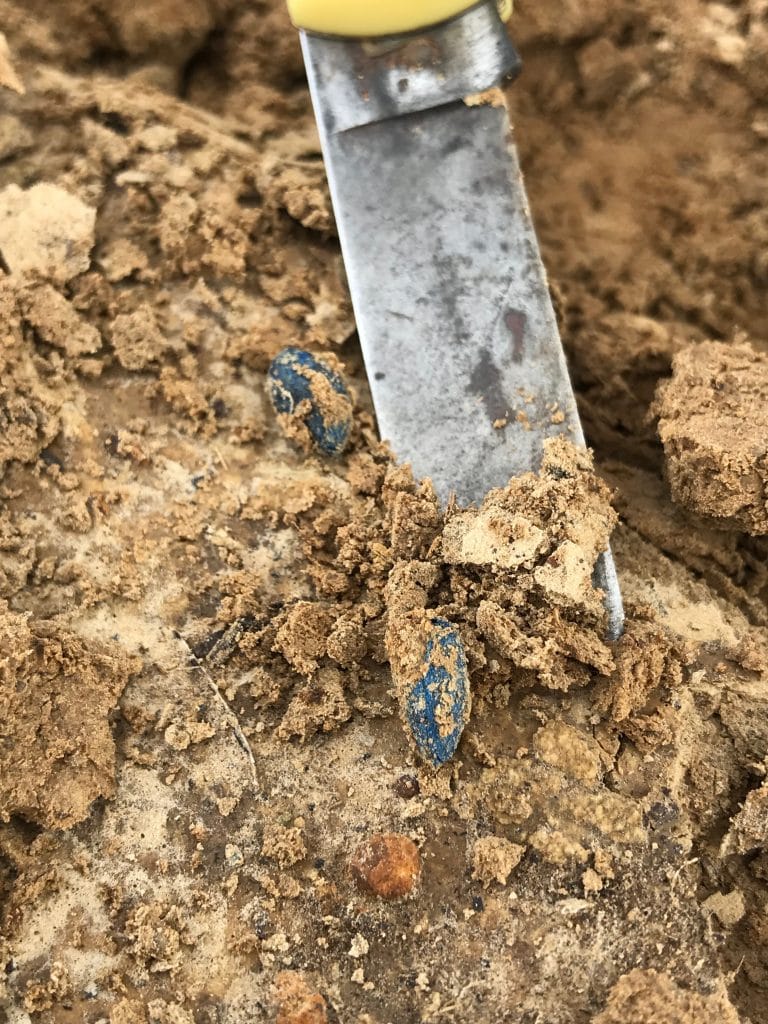 I’ve spent the past several days walking replants and fielding last minute variety placement/selection questions. This post covers a few thoughts I’d like to share concerning replants, variety maturity, and determining when to stop planting cotton. Continue reading
I’ve spent the past several days walking replants and fielding last minute variety placement/selection questions. This post covers a few thoughts I’d like to share concerning replants, variety maturity, and determining when to stop planting cotton. Continue reading
Corn and Cotton Producers’ Prevented Planting Decision
Federal crop insurance programs have a prevented planting provision that can protect producers from the financial losses and risks associated with not being able to plant the intended crop within the desired planting period. Revenue Protection, Revenue Protection with Harvest Price Exclusion, Yield Protection, and Area Risk Protection insurance policies pay indemnities if producers were unable to plant the insured crop by a designated final planting date or within any applicable late planting period due to natural causes, typically drought or excess moisture. This post highlights several components of those provisions and provides a few examples.
Kevin Adkins, Graduate Research Assistant, Department of Agricultural and Resource Economics, University of Tennessee
**Christopher N. Boyer, Associate Professor, Department of Agricultural and Resource Economics, University of Tennessee 302-I Morgan Hall Knoxville, TN 37996 Phone: 865-974-7468 Email: cboyer3@utk.edu **Corresponding author Continue reading
Making the cotton replant decision
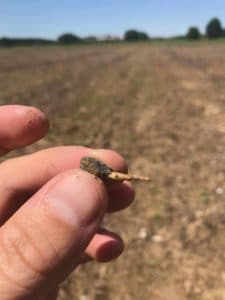 Adverse conditions experienced during or after cotton planting can negatively impact cotton seedlings and result in seedling death. If severe, stresses can reduce stands to unprofitable yield potentials. Unfortunately, cool nights, excessive rainfall and marginal seed quality from some seed lots have increased reports of failed stands. Determining whether to accept or replant a marginal stand of cotton is a particularly challenging decision since many factors must be considered. The purpose of this post is to highlight a few factors to consider while making the replant decision. Continue reading
Adverse conditions experienced during or after cotton planting can negatively impact cotton seedlings and result in seedling death. If severe, stresses can reduce stands to unprofitable yield potentials. Unfortunately, cool nights, excessive rainfall and marginal seed quality from some seed lots have increased reports of failed stands. Determining whether to accept or replant a marginal stand of cotton is a particularly challenging decision since many factors must be considered. The purpose of this post is to highlight a few factors to consider while making the replant decision. Continue reading
New cotton planting forecast tool from NC State
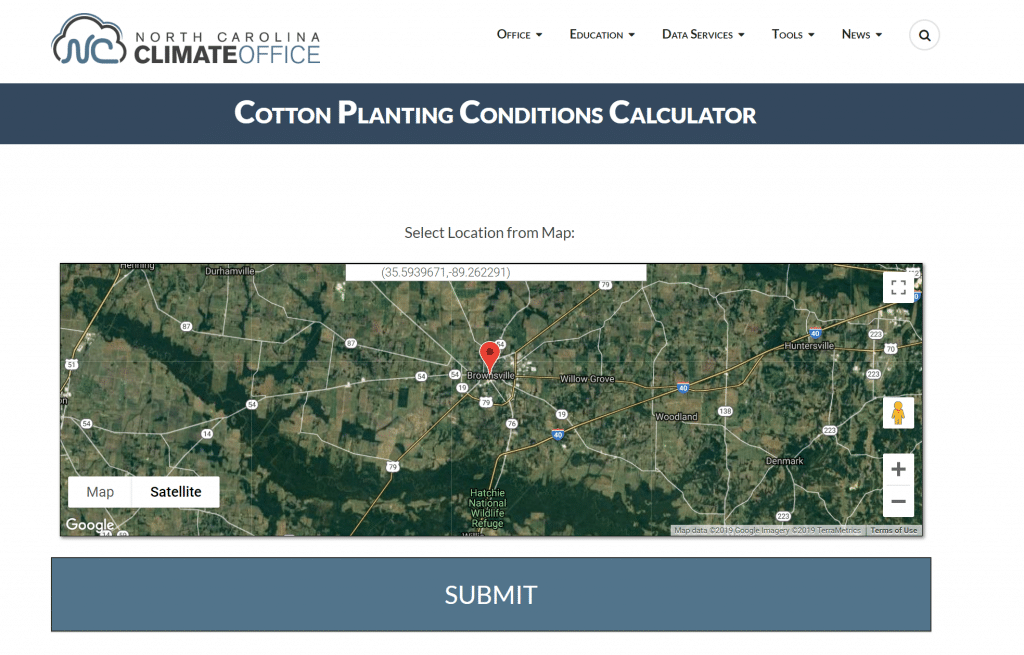 A new, very impressive cotton planting conditions calculator has been created by Dr. Guy Collins and Dr. Keith Edmisten with help from the Climatology Office at North Carolina State University. In this post, I highlight a few of the features and provide an example of how the calculator works.
A new, very impressive cotton planting conditions calculator has been created by Dr. Guy Collins and Dr. Keith Edmisten with help from the Climatology Office at North Carolina State University. In this post, I highlight a few of the features and provide an example of how the calculator works.
